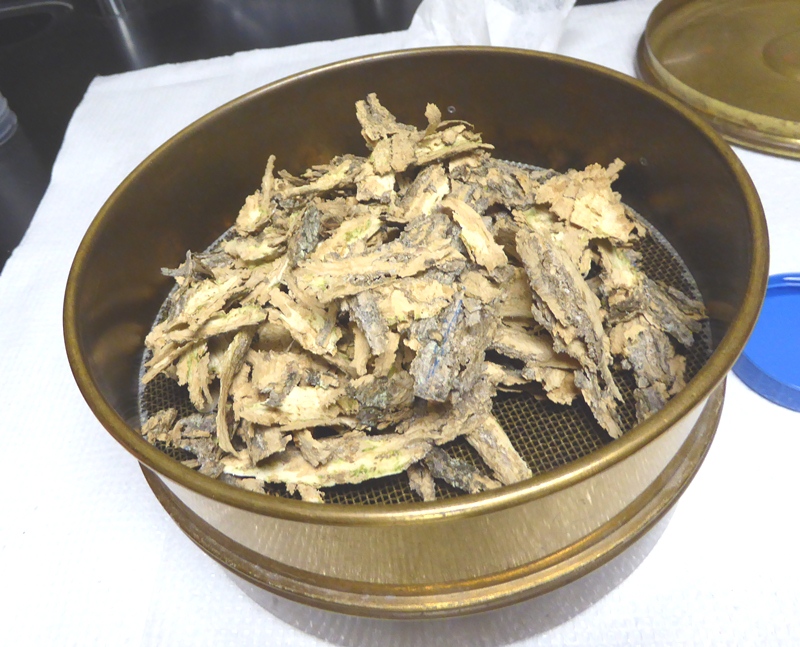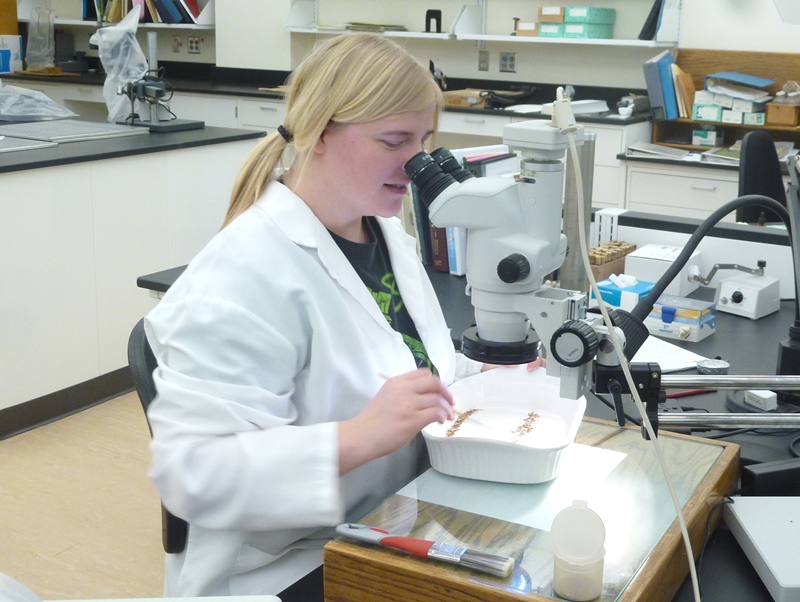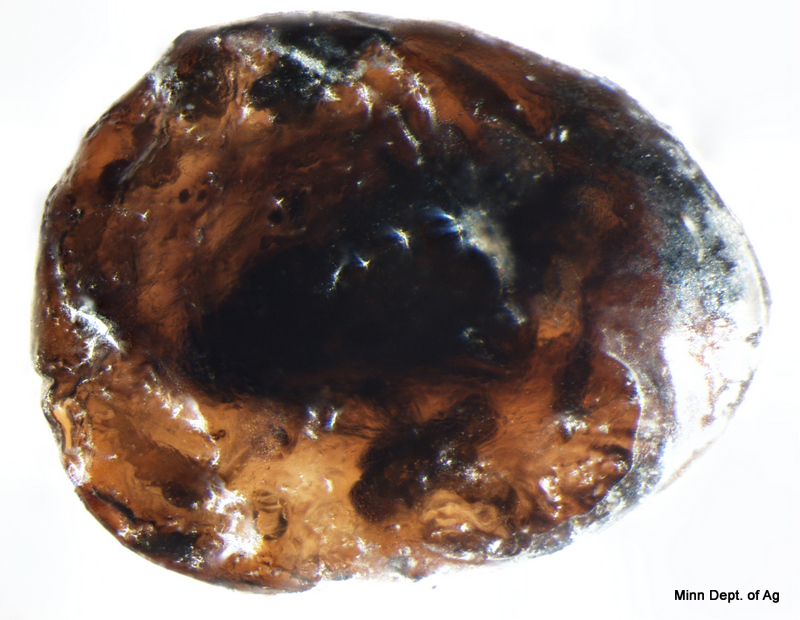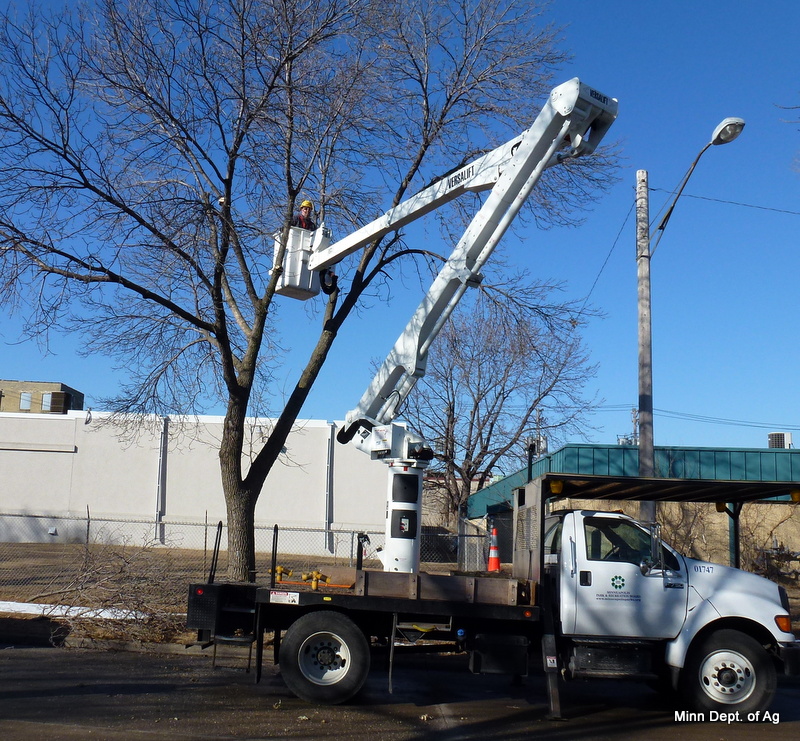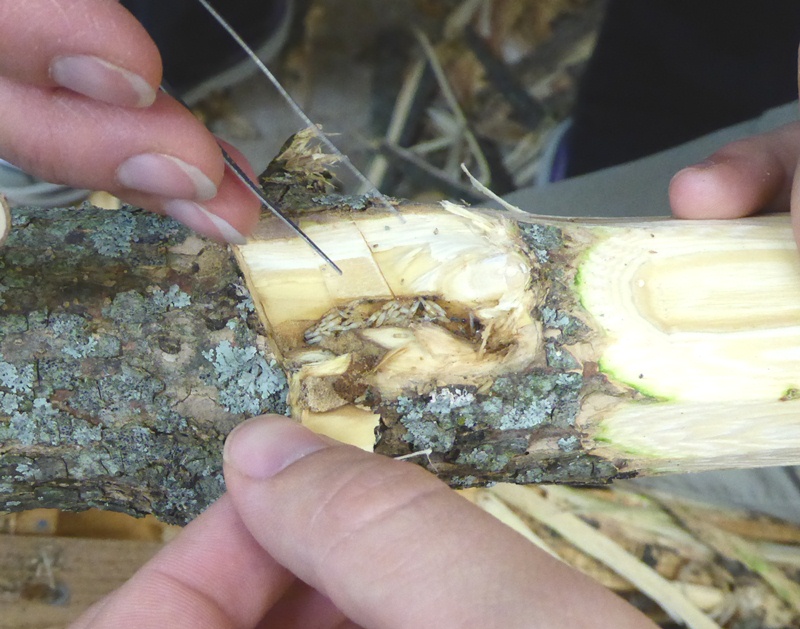This method was devised by Dr. Leah Bauer with the USDA Forest Service Northern Research Station in Lansing, MI. A 10 x 50cm section of outer bark is scraped off the trunk of an infested ash tree using a drawknife. The bark is collected by a plastic sheet laid at the base of the tree and then transferred to a paper bag to dry out and avoid the growth of mold while in storage. After the bark has dried for a month, the sample is placed into a sieve and shook for two minutes. Once done sieving the sample, the fine debris is transferred to a ceramic dish and analyzed underneath a dissecting microscope for the presence of parasitized EAB eggs.
This method was devised by Dr. Leah Bauer with the USDA Forest Service Northern Research Station in Lansing, MI. A 10 x 50cm section of outer bark is scraped off the trunk of an infested ash tree using a drawknife. The bark is collected by a plastic sheet laid at the base of the tree and then transferred to a paper bag to dry out and avoid the growth of mold while in storage. After the bark has dried for a month, the sample is placed into a sieve and shook for two minutes. Once done sieving the sample, the fine debris is transferred to a ceramic dish and analyzed underneath a dissecting microscope for the presence of parasitized EAB eggs.
A method used to collect adult parasitoids by use of pan traps. Yellow bowls are affixed to the trunks of ash trees with shelving brackets and filled with a clear propylene glycol solution. This liquid traps insects that are attracted to the yellow color of the bowl. Traps are sampled weekly throughout the summer. Samples are poured through a filter, frozen and screened for parasitoids in the late fall.
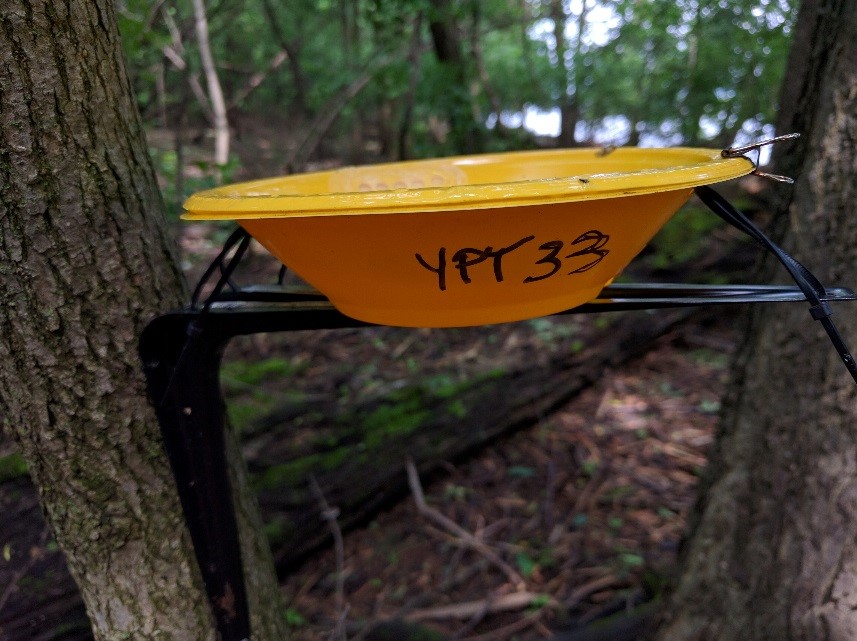
A method used to collect adult parasitoids by use of pan traps. Yellow bowls are affixed to the trunks of ash trees with shelving brackets and filled with a clear propylene glycol solution. This liquid traps insects that are attracted to the yellow color of the bowl. Traps are sampled weekly throughout the summer. Samples are poured through a filter, frozen and screened for parasitoids in the late fall.

A method used to collect adult parasitoids by use of pan traps. Yellow bowls are affixed to the trunks of ash trees with shelving brackets and filled with a clear propylene glycol solution. This liquid traps insects that are attracted to the yellow color of the bowl. Traps are sampled weekly throughout the summer. Samples are poured through a filter, frozen and screened for parasitoids in the late fall.

How Biological Control is Implemented
After a viable biological control site is identified, coordination by the MDA with local natural resource managers, property owners and the USDA EAB Parasitoid Rearing Facility are necessary. At each site one must obtain permission, guarantee access and ensure other management objectives won’t interfere with implementation. Special permits may be necessary depending on the ownership and designation of land. Long term site access is important for follow-up monitoring of ash health and documenting parasitoid establishment.
After a viable biological control site is identified, coordination by the MDA with local natural resource managers, property owners and the USDA EAB Parasitoid Rearing Facility are necessary. At each site one must obtain permission, guarantee access and ensure other management objectives won’t interfere with implementation. Special permits may be necessary depending on the ownership and designation of land. Long term site access is important for follow-up monitoring of ash health and documenting parasitoid establishment.
Not all sites fit the criteria for biological control. Once an EAB infestation is identified, several steps need to be completed to determine if biological control is viable:
- Perform a delimit survey of the infestation to identify the perimeter of where symptoms are visible.
- Gauge the intensity or pest pressure in the area based on severity of EAB symptoms throughout the identified visibly infested area. Low to moderate EAB densities are recommended for potential sites.
- Identify forested areas on public or private land within the visibly infested area where removal and/or treatment of infested ash trees will not be feasible. Size and composition of forest should be at least 40 acres and at a minimum include 20 percent ash of varying size class. Ideally, the site would be greater than 25 percent ash and connected to other woodlots.
